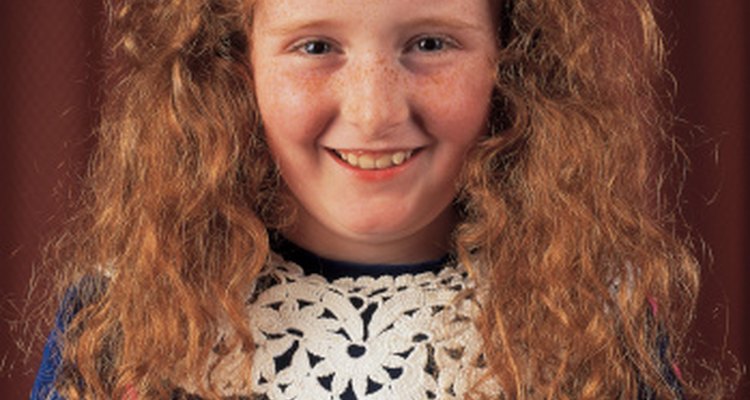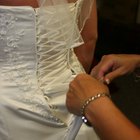
Sewing an Irish dance costume dress requires a lot of time and patience, and it can be a very expensive endeavor. However, with the cost of competition dresses ranging in the hundreds, sewing your own costume could be worth your while if you have enough experience. Before you begin this project, make sure you have a purpose for the dress, be it for competition or a dance recital. Competition dresses tend to be much more intricate and will require a lot more work.
Select the design of dress you want. The design should be reflective of the time and money you have to devote to this project. The more simple the design (e.g., less embroidery, repeated patterns) the less the dress will cost. Competition dresses are usually more intricate, so the purpose of the dress might help you decide on a design.
Select the colors and types of fabric you wish to use. If you are making a dress for a specific dance club, maybe the colors have already been decided for you. Competition dresses can generally be any color you want, although most people avoid using more than three colors on one dress.
Find a pattern you wish to follow. One of the most popular patterns for Irish dance dresses is made by Simplicity. This pattern is no longer manufactured and sold in fabric stores, but you can typically find it on online auction sites. Another popular pattern is offered by Irish Threads. You can find their pattern by visiting the Irish Threads website, and selecting “Dance Dress Pattern” from the menu on the left hand side.
Take the measurements of your dancer. Before you begin to cut the pieces for your pattern, be sure to carefully measure your dancer. If you are making a competition dress for a young dancer, it would be wise to make the dress slightly larger to compensate for growth. Competition dresses are painstaking and expensive to make, and the more use you can get out of them the better.
Attach the pattern to the wrong side of your fabric, and cut out all the pieces of your pattern, labeling each piece carefully. At this point, you might want to complete some of the embroidery work, depending on your design. If you are using stretchy fabric, you should use cotton interfacing to prevent the material from stretching out of shape. Also, any applique the pattern requires should be applied at this time.
Attach the sections of the dress together, starting with the side seams of the skirt. Assemble the bodice together and attach the arm pieces. Now attach the zipper to the back of the bodice; open ended zippers work well for this. Attach the collar (if the pattern has one) or pipe the neckline. Now sew the bodice to the skirt, starting with the front panel, and sew the zipper to the skirt.
Finish the dress by adding accessories such as a Tara brooch or Celtic pins. These are particularly useful because they will attach the sash of the dress to the shoulder with a decorative touch.
Related Articles

How to Hem a Sequin Dress

How to Make Chinese Dresses

How to Make a Mexican Dance Dress

How to Fix a Wedding Dress That Is Too ...

How to Decorate a Plain Dress

How to Hem a Sequin Dress

How to Make a Girl's Dress by Adding a ...

How to Make a Jingle Dress

How to Sew Tube Dresses

How to Sew Your Own Beads on Your ...

How to Convert Wedding Dresses Into ...

What Do You Wear to a Red-Tie Dinner?

How to Make a Tutu Stick Out

How to Do a Ballroom Bustle

Instructions for Sewing a Dashiki

How to Bustle a Mermaid Dress

How to Make a Children's Folklorico ...

How to Cut Out the Tulle for Your Veil

How to Crochet a Wedding Veil

How to Make a Chapel Veil
References
Writer Bio
Elyse James began writing professionally in 2006 after deciding to pursue a career in journalism. She has written for "The Algonquin Times" as a general assignment reporter and published blogs and articles on Webcitybeat. James holds a Bachelor of Journalism from the University of Ottawa.
Photo Credits
Stockbyte/Stockbyte/Getty Images